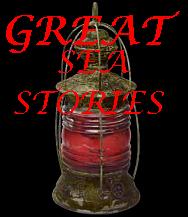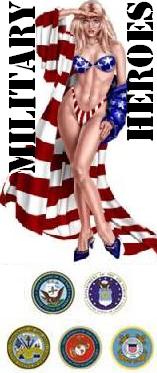Kilroy Was Here
The google-eyed, long-nosed cartoon figure of "Kilroy was here" fame -- first scrawled on a ship in Quincy's Fore River Shipyard during World War II's production push -- has gone on to attain cultural icon status. 
During the pivotal invasion of Okinawa, in spring of 1945, Navy ships surrounded the Japanese island, bombarding it all night while a small force of men went ahead to secure the main beach. In the morning, those aboard scanned the shore with binoculars to see how effective the attack had been. They got their answer when they saw ''Kilroy Was Here" spelled out in plywood on the beach, Herbert Holmes, stationed aboard the Quincy-built USS Baltimore that day, said in an interview before his death. As he announced to his shipmates what he saw through the binoculars, a roar went up from the crew. It wasn't long before Kilroy began to make his mark well beyond the beachheads. Leonard Morris, a Quincy resident who began fighting in North Africa in 1942, and was at D-Day and the Battle of the Bulge, said he saw ''Kilroy" everywhere, but had no idea who the guy was at the time. ''Every city and town that we went into, somebody painted ''Kilroy Was Here," said Morris, who first saw the graffiti somewhere in southern Germany. ''Walls, buildings, latrines -- you name it -- Kilroy was there. If they ever caught him, he would have been court-martialed." The legends around the myth grew as the sightings multiplied. One story had Adolf Hitler obsessed with Kilroy, driven mad by this elusive and unstoppable Allied super-spy. Joseph Stalin is said to have left the bathroom at the 1954 Potsdam Conference and asked his bodyguard who Kilroy was. And some say it has been traced in the dust of the moon, on France's Arc de Triomphe, and on the Statue of Liberty's torch. While most of the lore is anecdotal, the range of Kilroy stories is a testament to the power the phrase had during the war, and continues to have today. 'Kilroy Was Here' means something, said Michael Condon, director of the USS Salem, a Quincy-built battleship that is now a museum in the former Fore River shipyard property. ''It means that the US forces are there to protect you or save you." No one knew the origin of the phrase until after the war. In 1946, the American Transit Authority held a contest to discover its roots. James J. Kilroy, then a Halifax resident, won the contest by sharing the story of his authorship. A massive trolley car was delivered to his house as a prize, and his story became history. But in many ways, it was the mystery of the phrase that led to its power. ''It became a rallying cry in World War II and in Korea, and to this day, it still exists as an important icon for the military in the United States," said Dave Drummond, a former Quincy resident who wrote a history of the shipyard, and who will be back on Sunday to share his knowledge with visitors at the celebration. Condon said the goal of the ''Kilroy Was Here" campaign is to preserve the phrase and to lead people back to Quincy and the role the city played during the war. At the shipyard's peak, 58,000 people worked there, and a small city grew up around it. It was where Mildred Vento and her older sister, Dolly, would sing at night while their brothers fought in the war. ''I appreciate all that went on in the shipyard. There were many people that were killed or maimed permanently, from accidents in the yard," Vento said. ''I call them the unsung heroes."
During the pivotal invasion of Okinawa, in spring of 1945, Navy ships surrounded the Japanese island, bombarding it all night while a small force of men went ahead to secure the main beach. In the morning, those aboard scanned the shore with binoculars to see how effective the attack had been. They got their answer when they saw ''Kilroy Was Here" spelled out in plywood on the beach, Herbert Holmes, stationed aboard the Quincy-built USS Baltimore that day, said in an interview before his death. As he announced to his shipmates what he saw through the binoculars, a roar went up from the crew. It wasn't long before Kilroy began to make his mark well beyond the beachheads. Leonard Morris, a Quincy resident who began fighting in North Africa in 1942, and was at D-Day and the Battle of the Bulge, said he saw ''Kilroy" everywhere, but had no idea who the guy was at the time. ''Every city and town that we went into, somebody painted ''Kilroy Was Here," said Morris, who first saw the graffiti somewhere in southern Germany. ''Walls, buildings, latrines -- you name it -- Kilroy was there. If they ever caught him, he would have been court-martialed." The legends around the myth grew as the sightings multiplied. One story had Adolf Hitler obsessed with Kilroy, driven mad by this elusive and unstoppable Allied super-spy. Joseph Stalin is said to have left the bathroom at the 1954 Potsdam Conference and asked his bodyguard who Kilroy was. And some say it has been traced in the dust of the moon, on France's Arc de Triomphe, and on the Statue of Liberty's torch. While most of the lore is anecdotal, the range of Kilroy stories is a testament to the power the phrase had during the war, and continues to have today. 'Kilroy Was Here' means something, said Michael Condon, director of the USS Salem, a Quincy-built battleship that is now a museum in the former Fore River shipyard property. ''It means that the US forces are there to protect you or save you." No one knew the origin of the phrase until after the war. In 1946, the American Transit Authority held a contest to discover its roots. James J. Kilroy, then a Halifax resident, won the contest by sharing the story of his authorship. A massive trolley car was delivered to his house as a prize, and his story became history. But in many ways, it was the mystery of the phrase that led to its power. ''It became a rallying cry in World War II and in Korea, and to this day, it still exists as an important icon for the military in the United States," said Dave Drummond, a former Quincy resident who wrote a history of the shipyard, and who will be back on Sunday to share his knowledge with visitors at the celebration. Condon said the goal of the ''Kilroy Was Here" campaign is to preserve the phrase and to lead people back to Quincy and the role the city played during the war. At the shipyard's peak, 58,000 people worked there, and a small city grew up around it. It was where Mildred Vento and her older sister, Dolly, would sing at night while their brothers fought in the war. ''I appreciate all that went on in the shipyard. There were many people that were killed or maimed permanently, from accidents in the yard," Vento said. ''I call them the unsung heroes."



















<< Home